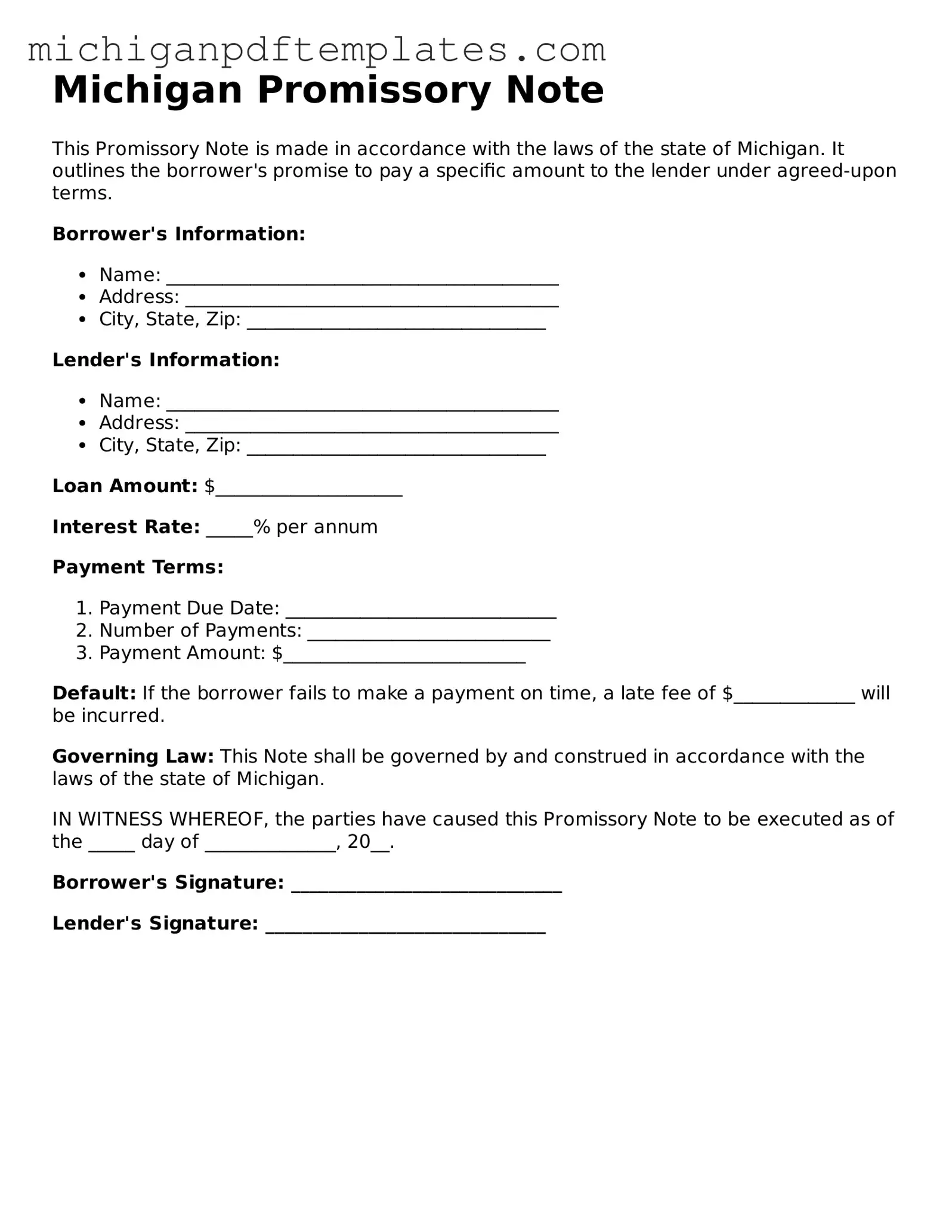The Michigan Promissory Note form serves as a crucial document in the realm of personal and business finance, facilitating the borrowing and lending of money in a clear and legally binding manner. This form outlines the borrower's promise to repay a specified amount of money to the lender, detailing essential elements such as the principal amount, interest rate, repayment schedule, and maturity date. Additionally, it may include provisions for late fees, prepayment options, and any collateral that secures the loan. By providing a structured framework for the transaction, the Promissory Note not only protects the interests of both parties but also establishes the legal obligations that arise from the agreement. Understanding the nuances of this form is vital for individuals and businesses alike, as it ensures that financial transactions are conducted with transparency and accountability. Whether used in informal agreements between friends or formal contracts between corporations, the Michigan Promissory Note is an indispensable tool in the financial landscape.
